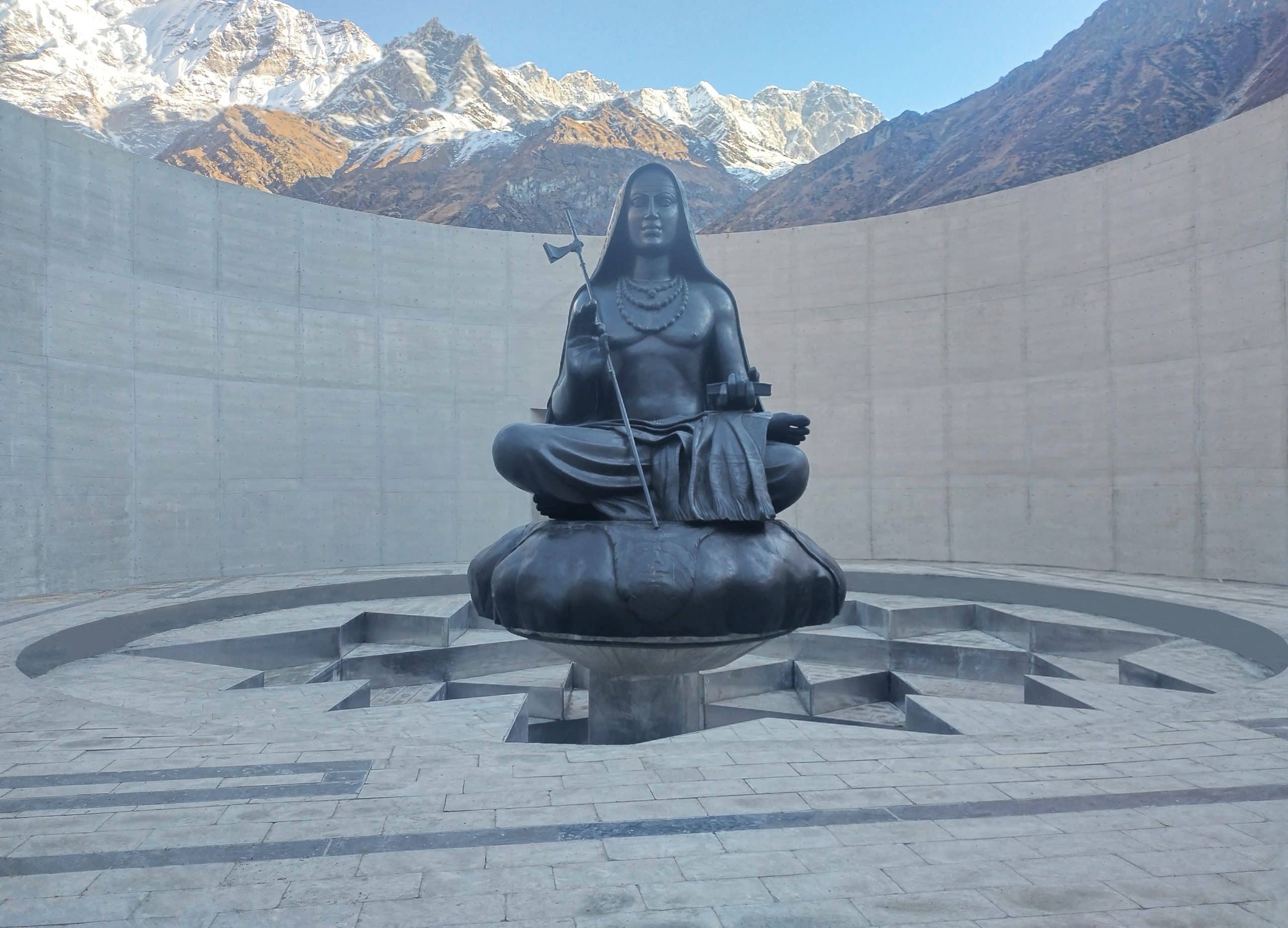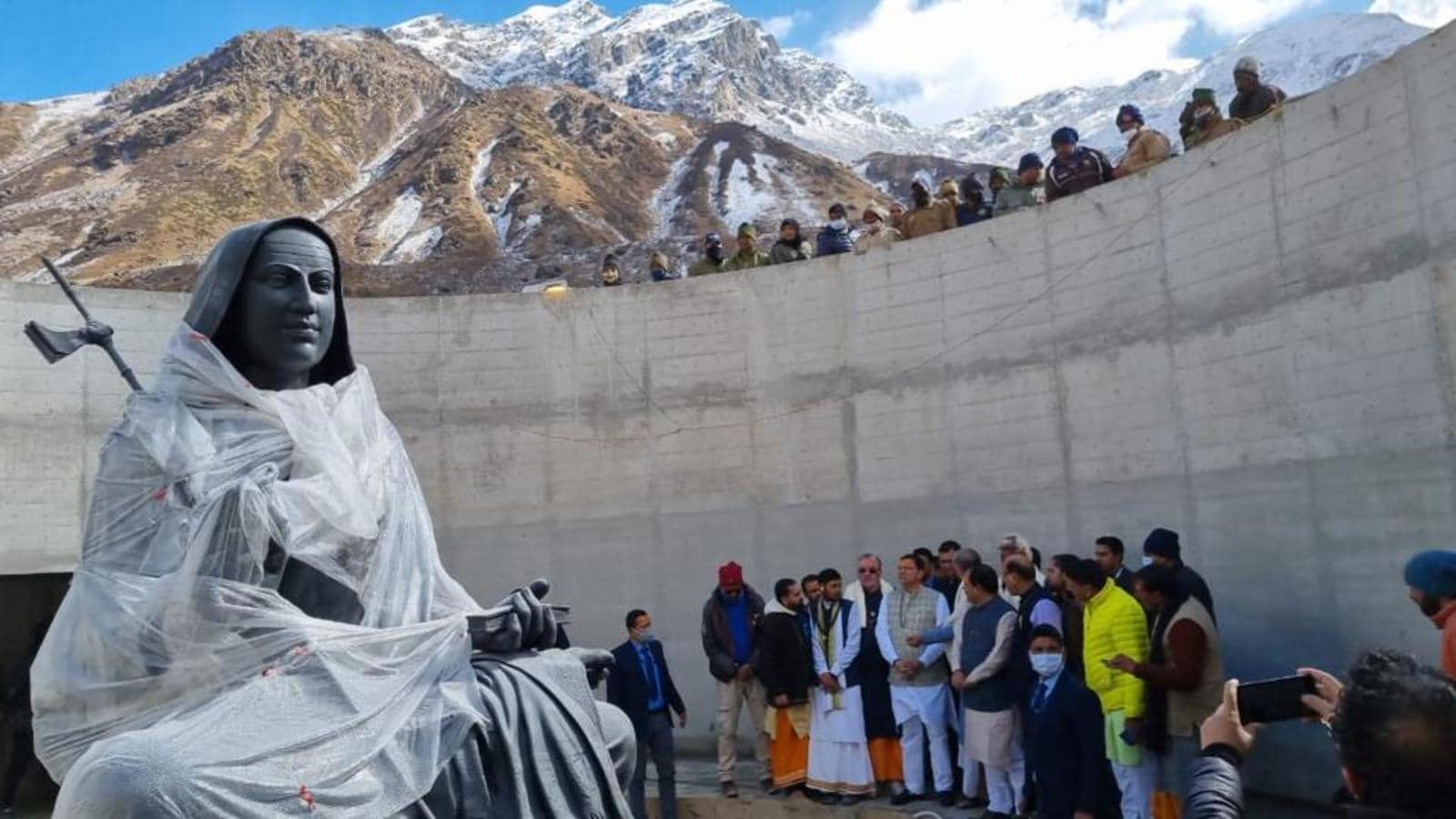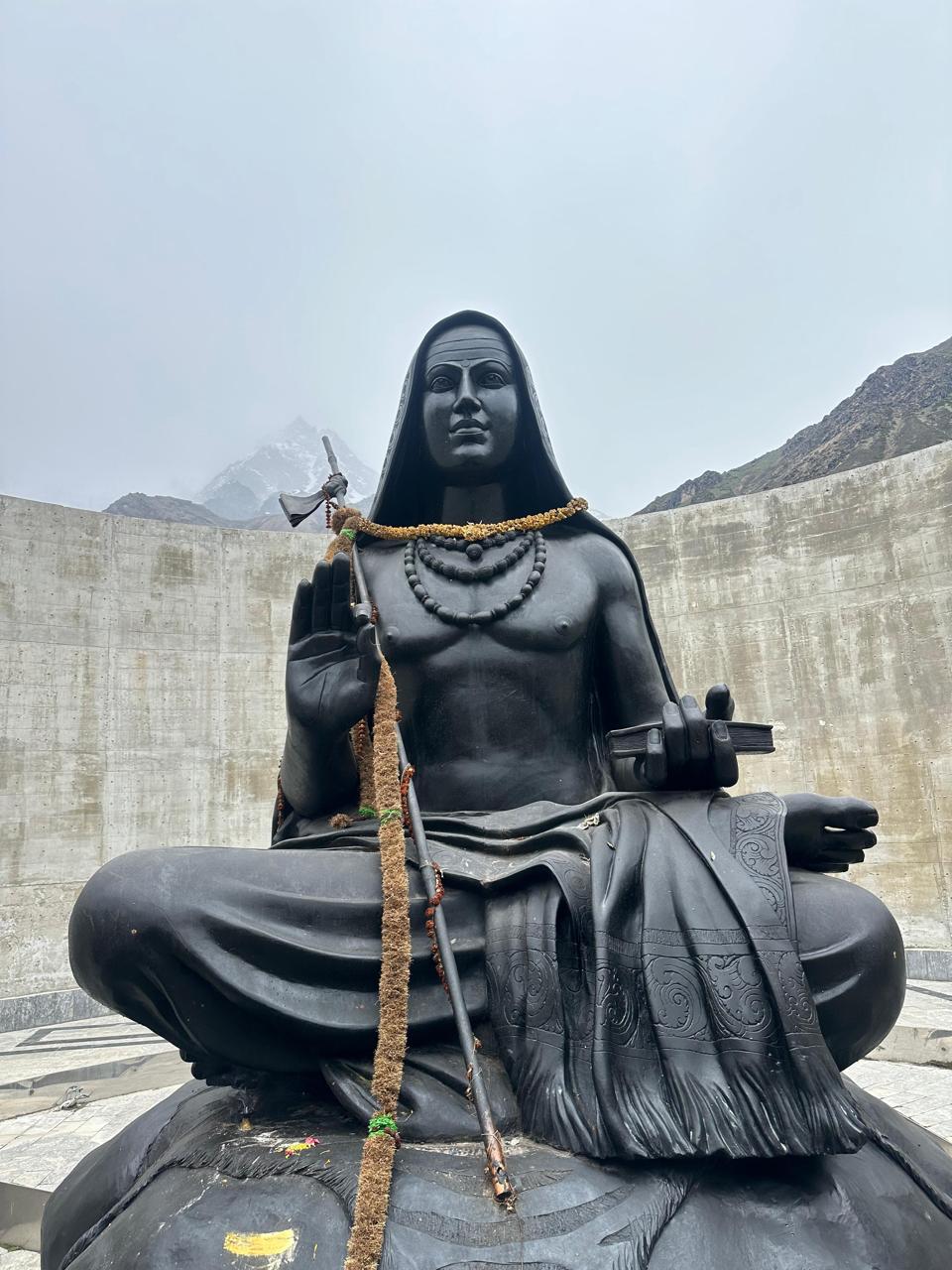Adi shankaracharya Statue
Published on June 26, 2025
Amidst the majestic Himalayan landscape of Kedarnath, one can now witness a grand and awe-inspiring 12-foot statue of Adi Shankaracharya, standing gracefully behind the Kedarnath Temple. This statue is not just a tribute to a revered philosopher-saint but a powerful symbol of India’s spiritual, philosophical, and cultural unity. Installed in 2021, this sculpture immortalises the contribution of Jagadguru Adi Shankaracharya, the spiritual reformer who reshaped Hinduism and revived Sanatan Dharma in the 8th century.
Who Was Adi Shankaracharya?
Adi Shankaracharya (788–820 CE) was one of the greatest Indian philosophers, theologians, and spiritual leaders. He was born in Kalady, Kerala, and by the age of 16, he had mastered the Vedas, Upanishads, and scriptures, and began traveling across India to spread the doctrine of Advaita Vedanta—the non-dualistic school of Hindu philosophy.
His primary message was that the soul (Atman) and the Supreme Consciousness (Brahman) are the same. He challenged ritualistic practices and emphasised knowledge, self-inquiry, and direct experience of truth.

Life and Legacy
Shankaracharya travelled across the Indian subcontinent on foot at a young age, engaging in debates with scholars, defeating opponents with logic and spiritual insight, and reviving Hindu philosophy at a time when it was under threat from ritualism and other belief systems.
Some of his major contributions include:
-
Establishing the Four Mathas (monasteries) in the four corners of India: Sringeri (South), Dwarka (West), Puri (East), and Jyotirmath (North).
-
Reviving and reorganising Sanatan Dharma.
-
Writing commentaries on the Bhagavad Gita, Brahma Sutras, and Upanishads.
-
Promoting the Advaita Vedanta school of thought.
-
Reestablishing the significance of the Char Dham pilgrimage—Badrinath, Dwarka, Puri, and Rameswaram.
Adi Shankaracharya and Kedarnath
According to legends and historical beliefs, Adi Shankaracharya visited Kedarnath during his spiritual journey in the Himalayas. After completing his work of reviving Dharma across India, it is believed that he attained Mahasamadhi (conscious departure from the body) at Kedarnath around the age of 32.
The region around Kedarnath holds great spiritual power, and Shankaracharya chose this divine land to merge with the eternal. It is said that he disappeared near the Kedarnath Temple, and his presence continues to guide the energies of this holy place.
The Statue of Adi Shankaracharya – A Grand Tribute
In November 2021, Indian Prime Minister Narendra Modi unveiled a 12-foot-tall statue of Adi Shankaracharya at Kedarnath as part of the redevelopment project after the devastating floods of 2013. The statue is made of chlorite schist stone, weighs approximately 35 tonnes, and stands as a spiritual and cultural symbol of unity.

Features of the Statue:
-
Material: Chlorite schist, a weather-resistant stone ideal for high-altitude conditions.
-
Height: 12 feet (3.6 meters).
-
Weight: Over 35 tonnes.
-
Craftsmanship: The statue was sculpted by over 120 artisans in Mysuru, Karnataka.
-
Installation: It was transported to Kedarnath in carefully designed parts and assembled at high altitude.
This project was part of the Kedarnath Reconstruction and Redevelopment Plan, initiated after the tragic 2013 floods. The statue now stands just behind the main Kedarnath Temple, overlooking the valley and the Mandakini River, symbolising Shankaracharya’s eternal watch over one of the holiest Hindu sites.
Symbolism and Spiritual Significance
The statue is not just a monument—it is a reminder of India’s ancient wisdom, spiritual courage, and philosophical strength. Adi Shankaracharya’s presence through this statue connects pilgrims to India’s deep-rooted spiritual traditions.
-
It honours the unity of all sects under the umbrella of Sanatan Dharma.
-
It inspires millions of pilgrims to delve deeper into the philosophy of non-duality (Advaita).
-
It stands as a beacon of spiritual resilience and rebirth, especially after the natural disaster that once devastated Kedarnath.
Advaita Vedanta – His Timeless Philosophy
Adi Shankaracharya’s greatest contribution was the establishment of Advaita Vedanta, a school of thought that teaches:
"Brahma Satyam, Jagat Mithya, Jivo Brahmaiva Na Aparah"
(Brahman alone is real; the world is illusory; the individual self is not different from Brahman.)
This philosophy teaches that the ultimate reality is beyond forms and names, and one must seek it through self-realisation, detachment, and meditation. In today’s modern world, these teachings continue to offer clarity, peace, and spiritual liberation.
Kedarnath Redevelopment and Shankaracharya's Role
The Kedarnath temple was severely affected by the 2013 flash floods. As part of its restoration, the government focused on spiritual, cultural, and infrastructural revival. The installation of the Adi Shankaracharya statue played a central role in this vision.
Now, alongside the powerful presence of Lord Kedarnath (Shiva), the figure of Jagadguru Shankaracharya represents spiritual knowledge and eternal guidance.
The new pilgrimage experience includes:
-
A dedicated Samadhi Sthal (memorial) marking the site where Shankaracharya is believed to have attained Mahasamadhi.
-
Information centres and plaques that educate pilgrims about his life and teachings.
-
A beautifully developed platform around the statue, ideal for meditation and contemplation.

Pilgrim Experience
For pilgrims visiting Kedarnath, seeing the statue of Adi Shankaracharya is a deeply emotional and spiritual moment. The serene expression on the saint’s face, the backdrop of the Himalayas, and the energy of the temple surroundings create an atmosphere of divine silence and introspection.
Many visitors pause here to meditate, chant mantras, or simply sit in silence to absorb the aura of one of India’s greatest spiritual masters.
Summary
The Adi Shankaracharya statue at Kedarnath is not just a monument—it is a living tribute to the timeless message of unity, knowledge, and inner liberation. His presence at Kedarnath symbolises the spiritual foundation of India, guiding seekers toward self-realisation and higher truths.
As modern pilgrims undertake the challenging trek to Kedarnath, the sight of the philosopher-saint standing tall behind the temple reminds them of the deeper purpose of their journey—not just physical darshan, but also inner awakening. In the lap of the Himalayas, amidst snow and silence, Adi Shankaracharya lives on—not just in stone, but in spirit.
